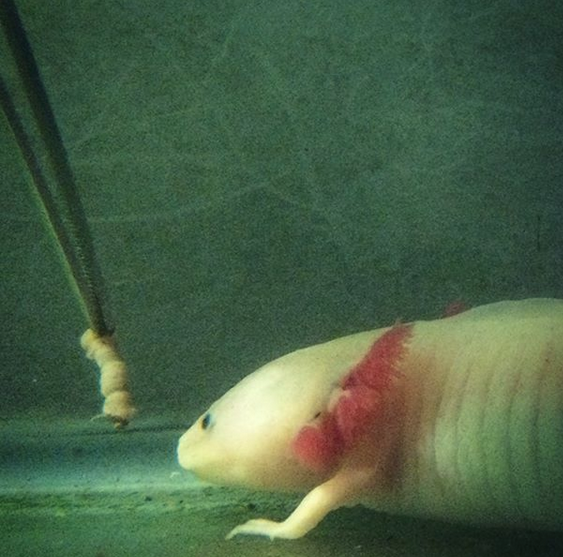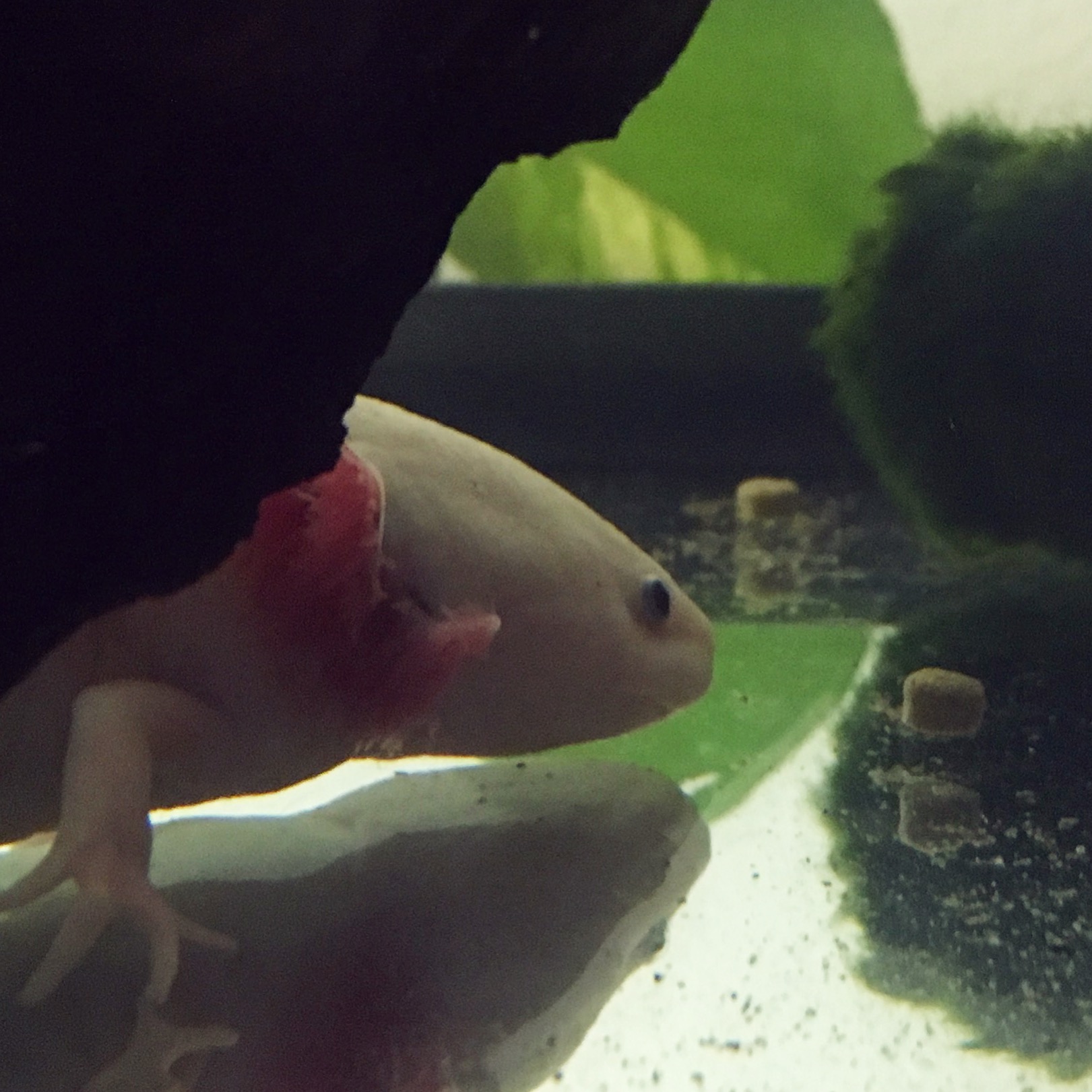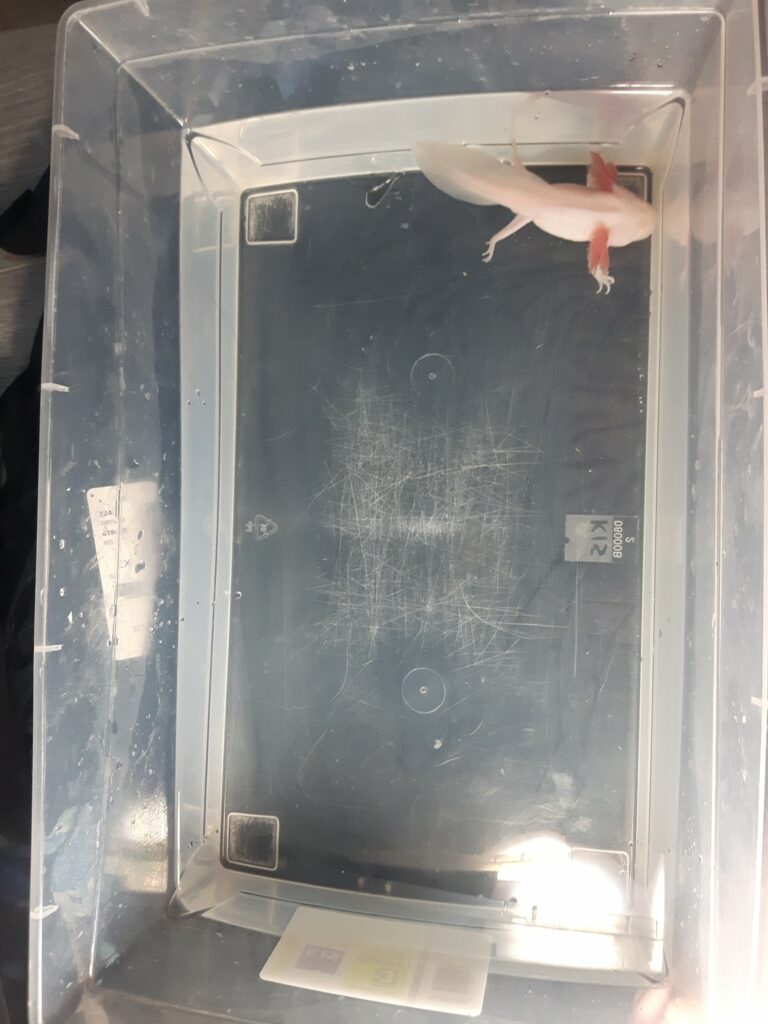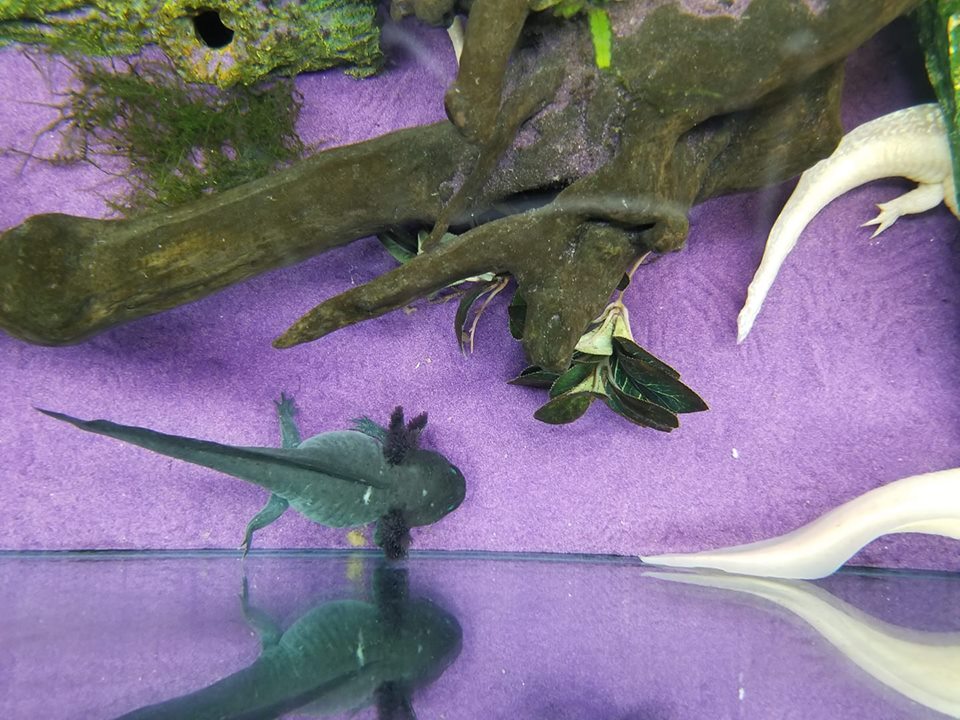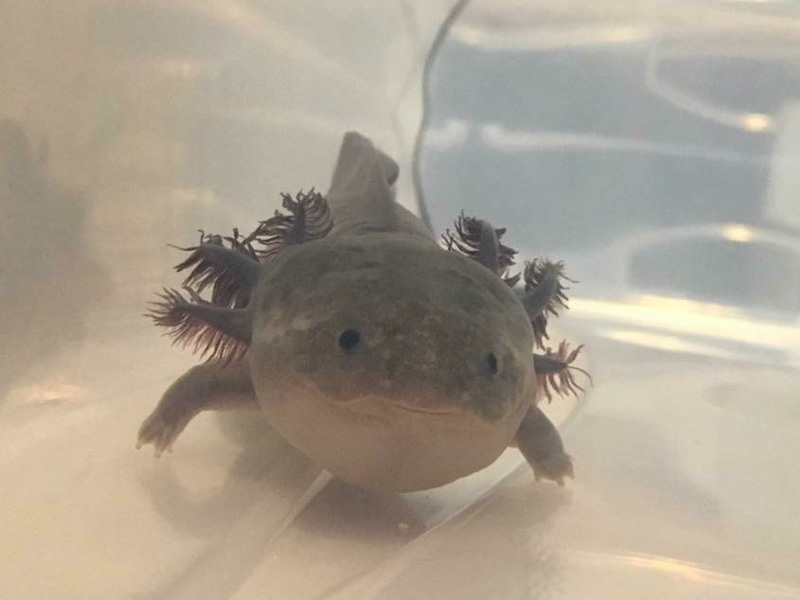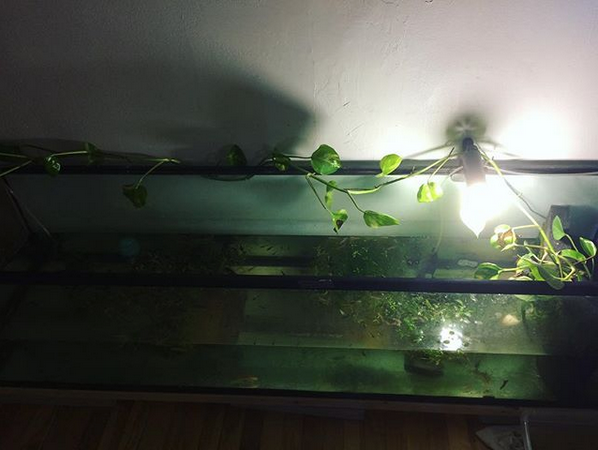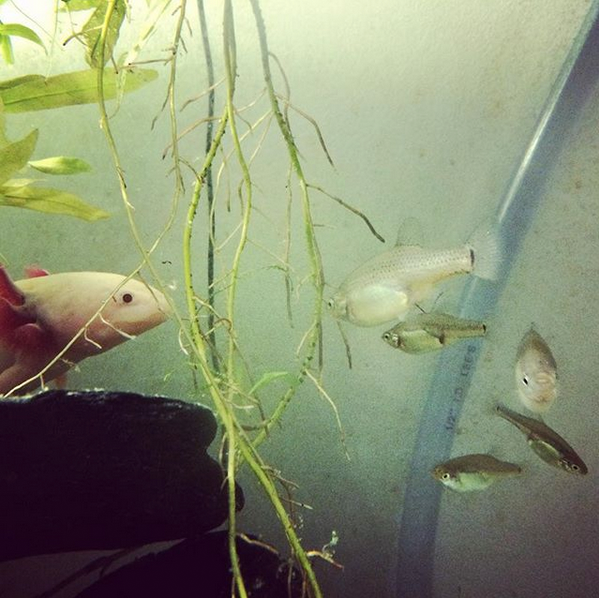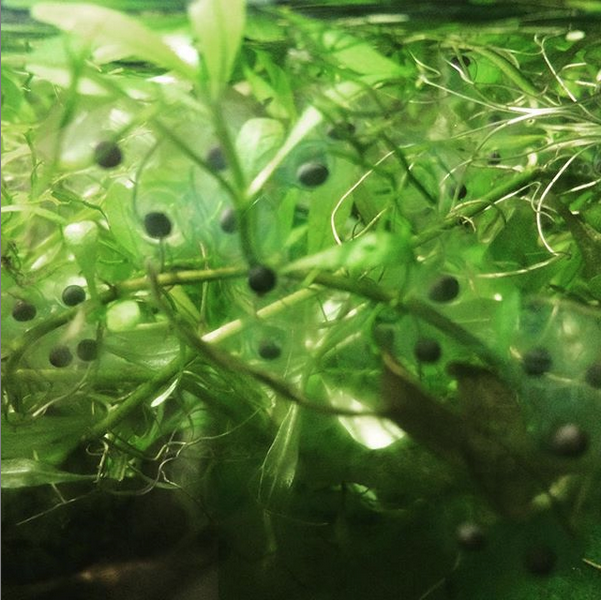
An axolotl’s coloring is the result of genetics, and to a lesser degree, environment and diet. Let’s go over the different color pigments involved, and you’ll understand what I mean.
The three natural color pigments are:
- Eumelanin (brown, black)
- Crystalized purines (iridescent white)
- Pteridines (yellow, orange)
There is also a fourth pigment that is present in some transgenic axolotls:
- Green fluorescent proteins (bright yellow, glowing neon green under a UV light)
We’ll get back to this one later — let’s focus on the three natural pigments first. These are naturally present in the majority of axolotls. Besides looking pretty and helping with camouflage, they also come with health benefits: eumelanin helps protect the skin against UV radiation, and pteridines play an important role in the axolotl’s immune system.
You can see all three pigments expressed in the picture below:
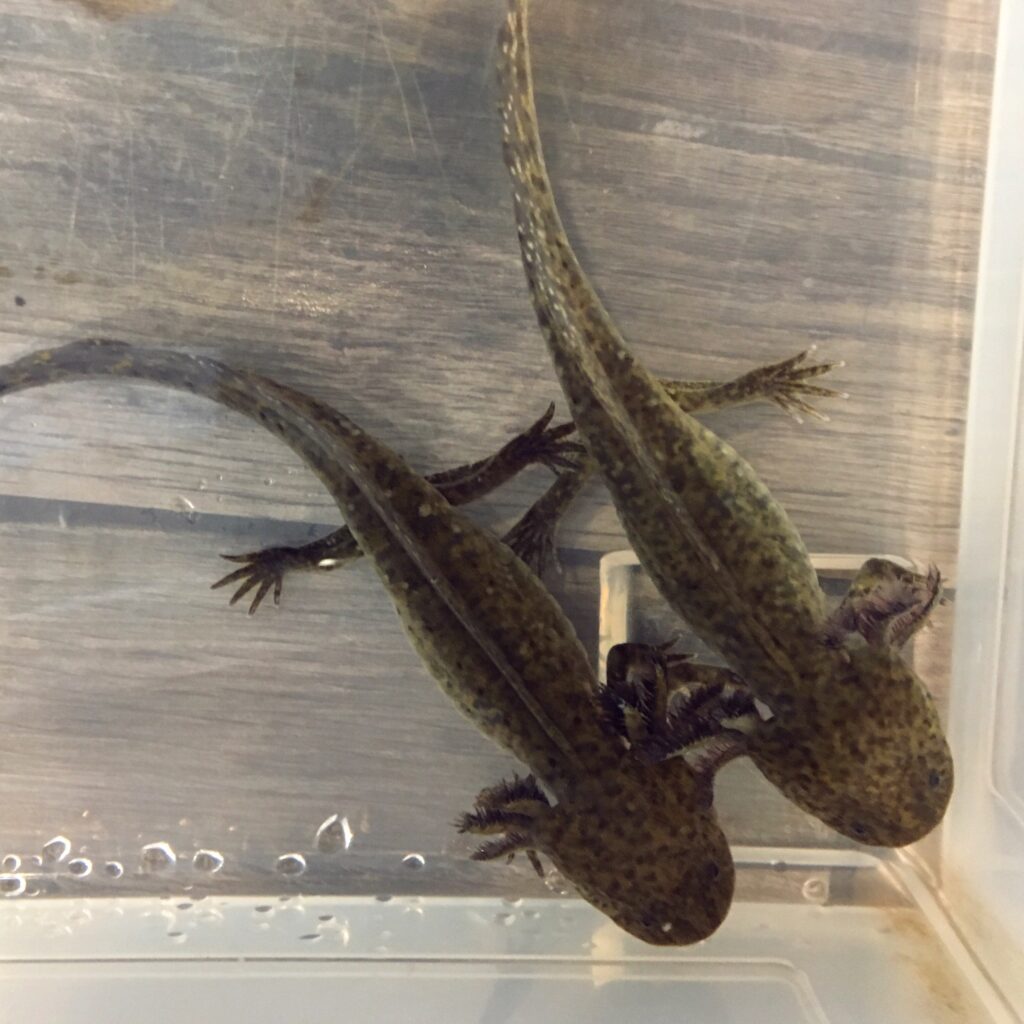
Axolotls that possess all three pigments are called wild-type. Even though they all have the same pigments, there can be a lot of variation in wild-type appearance. For instance, the axolotls shown above have a lot of yellow pteridines, which gives them an overall olive tint. They also have white spots on their tails. If I had taken the photo with the flash on, you would have seen that those white spots are shimmery, because they are made of crystallized purines.
The axolotl in the photo below is a much darker wild-type:
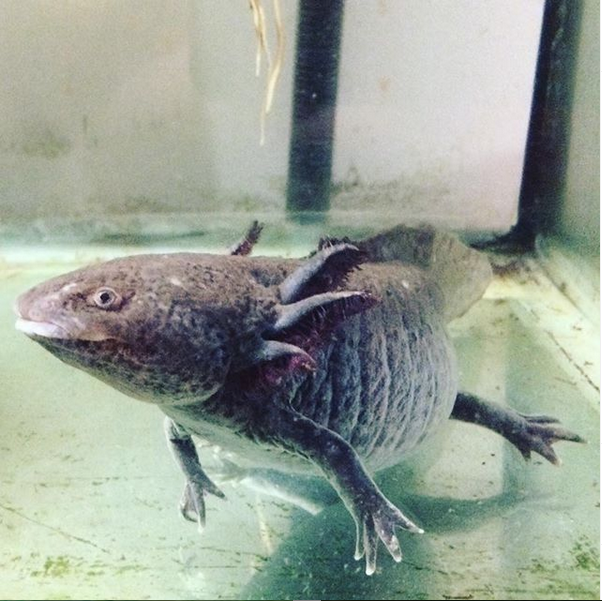
In this photo, we can see a lot of eumelanin. The other pigments are also present, but not very noticeable. You can see a little bit of crystallized purines in the eye ring and the tip of the gill stalks. Pteridines are almost completely invisible under the dark eumelanin.
Let me show you one more, very different wild-type look:

Isn’t this boy gorgeous? Here, eumelanin forms the base skin color, but the pteridines and crystallized purines being layered on top of each other create a gold flake effect.
In addition to the variety among wild-types, there are a lot of different color types, or “morphs”, besides wild-type. Over the course of their history, axolotls have undergone several genetic mutations which affect their pigmentation — some of which are natural, some of which are the result of human intervention.
Here are the six main genetic traits that affect axolotl pigmentation:
- Albinism (affects eumelanin)
- Melanism (affects crystallized purines)
- Axanthicism (affects pteridines and crystallized purines)
- Leucism (affects eumelanin, pteridines and crystallized purines)
- Copper trait (affects eumelanin and/or pteridines)
- GFP trait (affects green fluorescent proteins)
We’ll talk more about these traits in the next section of the article. For, now I just want you to keep in mind that there are several genetic traits that can essentially switch pigment production on and off, or affect how pigments are distributed around the body.
Let’s take a closer look at what each pigment looks like individually.
Eumelanin
Eumelanin is the pigment responible for shades of brown and black. It is produced by pigment cells called melanophores. To give you a better idea of what the pigment looks like on its own, here is what an axolotl looks like when it shows only eumelanin:
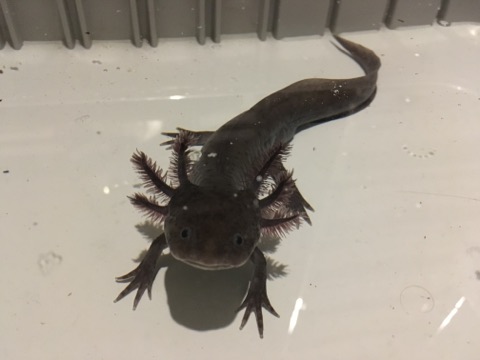
Fun fact: the amount of eumelanin produced by an axolotl depends on two things: genetics, and environment. Axolotls whose parents were especially dark tend to exhibit similarly dark features. Axolotls who grow up in dark environments also tend to exhibit darker features than ones kept in lighter environments.
The absence of eumelanin, due to an inability to produce melanophores, is called albinism. Here is what an axolotl looks like when you completely remove eumelanin, keeping only the other two pigments:
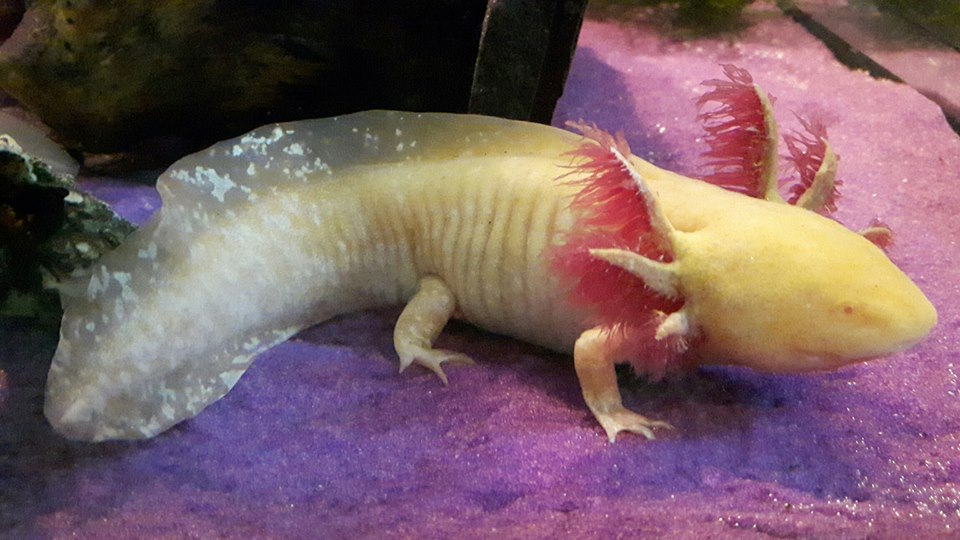
Pretty neat, right?
Crystallized purines
Crystallized purines are iridescent white pigments, which means they shimmer in a sort of rainbow effect. Combined with pteridines, they can also create a shiny golden color, as we’ve seen above. Crystallized purines are produced by pigment cells called iridophores. Here is what iridophores look like on their own:
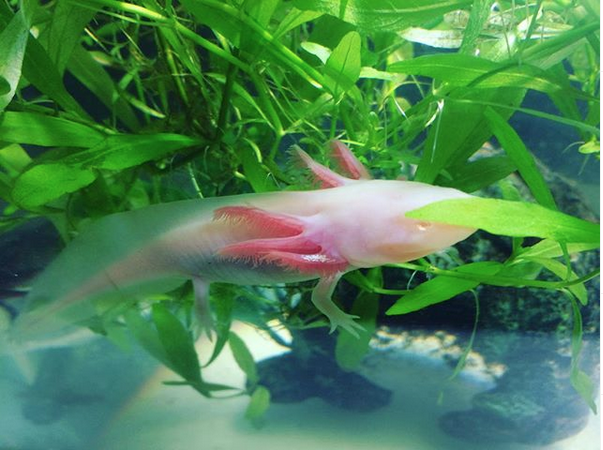
The inability to produce iridophores is called melanism. Notice how the shiny white pigments are missing in the picture below:
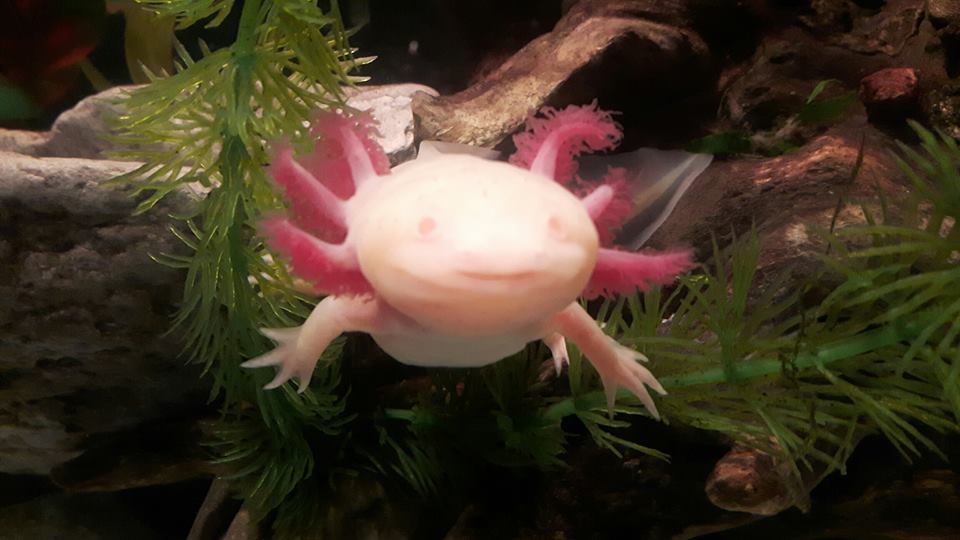
Melanism is a little bit more complex than albinism. We’ll talk about it more in part 3 of this article.
Pteridines
Pteridines are responsible for yellow and orange coloration. They are produced by pigment cells called xantophores. This is what pteridines look like when you remove the other two pigments:
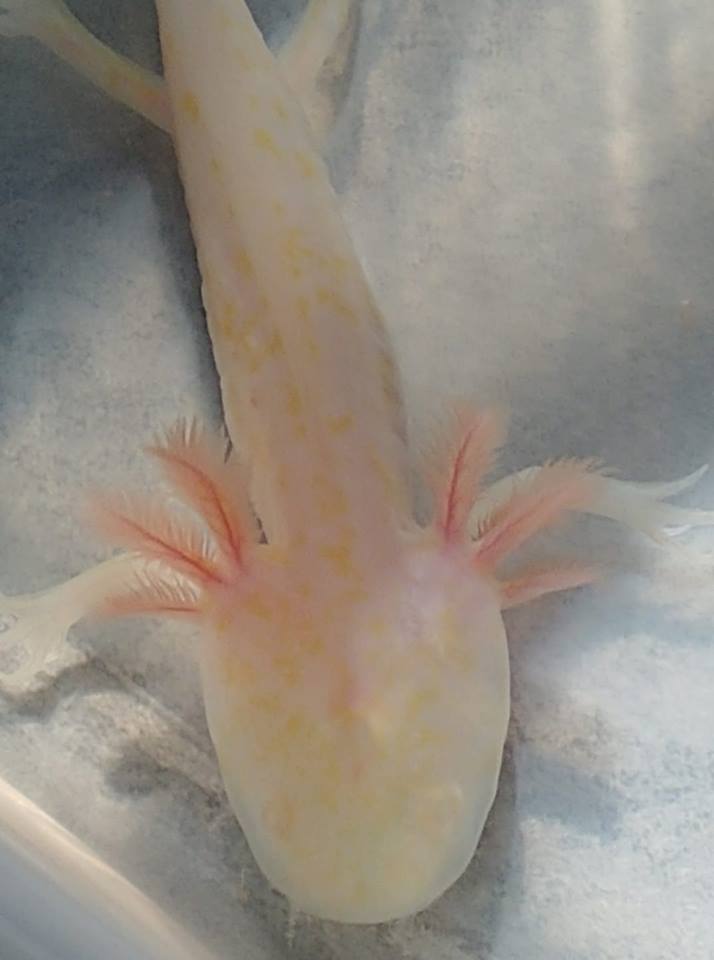
The inability to produce pteridines is called axanthicism. Axanthic axolotls are exceedingly rare, if not impossible to find in the Canadian pet trade. This is partly due to strict import laws, and partly due to the effect axanthicism has on axolotl health. Since pteridines play a role in immune function, axanthic axolotls have a lower survival rate than other axolotls.
In the absence of pteridines, axanthic axolotls take on a purple-grey look:
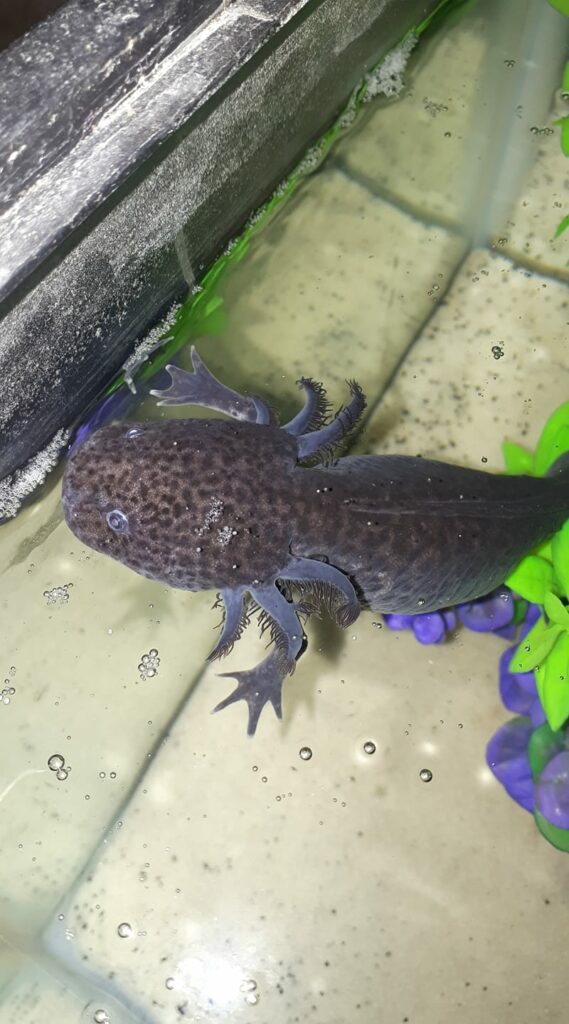
Do you notice some odd things about this picture? Axanthicism is a much more complex mutation than albinism and melanism. We’ll talk more about it when we get to the next section.
Green fluorescent proteins (GFP)
In the course of their use as animal research models [more on this soon!], some axolotls got a pretty cool addition to their genomes: the GFP trait. Originally found in a species of jellyfish, this trait causes nearly every cell in the axolotl’s body to produce a bright yellow protein which glows neon green under a UV light. Why is this cool? First, it’s been very helpful to researchers working on limb regeneration and organ transplants. Second, it looks very pretty! And third, the trait can be passed down from generation to generation. But my favorite thing about it is that, since the effect isn’t limited to pigment cells, it isn’t affected by leucism. You’ll see what I mean when we get to the next part!
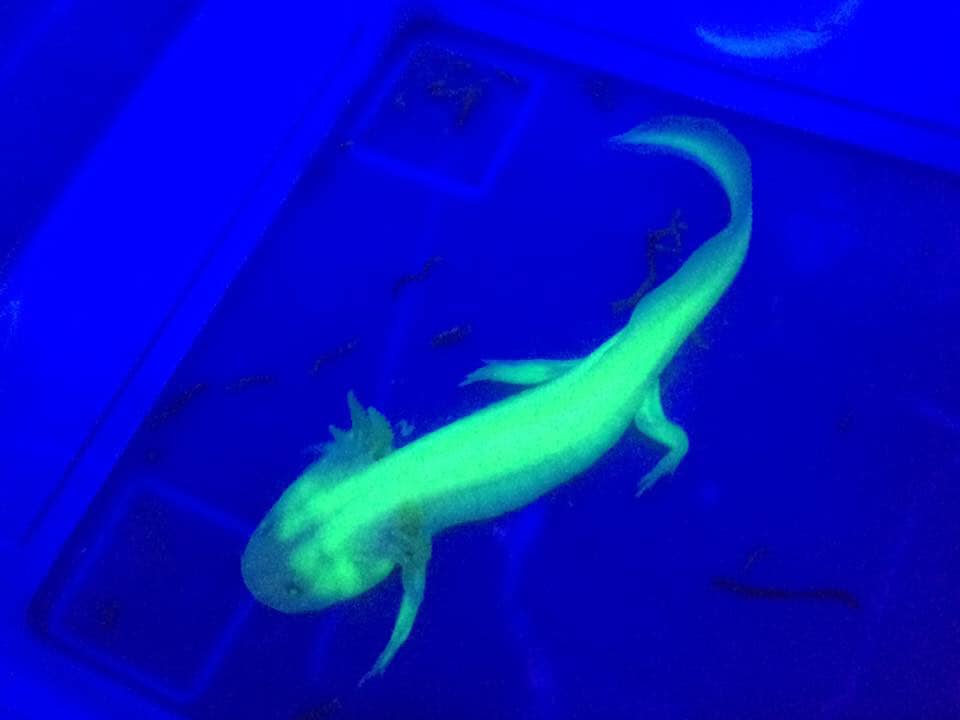
Now that you have a good idea of what the individual pigments do, let’s take a look at the genetics behind them!
Axolotl Genetics, Part 2: Mendelian Inheritance and Albinism ->

